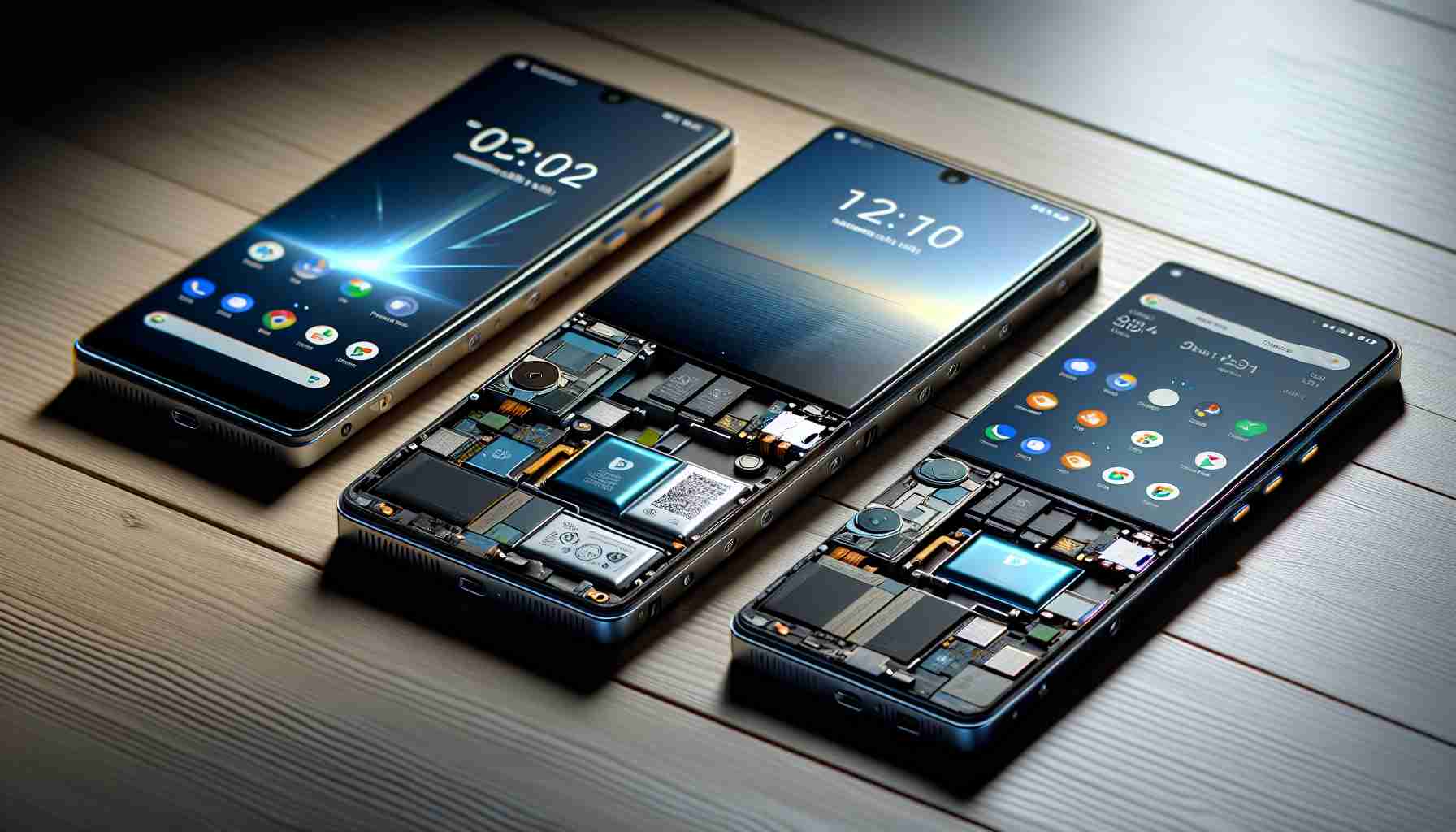HMD Global Steps into a New Era with Its Own Smartphone Lineup
HMD Global, known previously for Branded partnership with Nokia, has taken a significant turn with the introduction of its inaugural HMD-branded smartphones. The company has launched a trifecta of devices named HMD Pulse, Pulse+, and Pulse Pro, all touting “Gen 1 repairability” – a nod to the increasing demand for sustainable and user-serviceable tech.
These three smartphones boast a Unisoc T606 chipset, hefty 5,000 mAh batteries, and a smooth viewing experience with their 720p LCD 90Hz displays, positioning themselves as user-friendly options in the tech market. With a promise of two major Android updates and three years of security patches, HMD underlines long-term use and value.
Meet the HMD Pulse Series
The entry-level HMD Pulse, priced at €140, serves as the gateway to the series, providing a solid 6.65-inch HD+ display optimized with 600 nits of brightness and 70% NTSC gamut color coverage. It features a dual-camera setup on the rear with a 13MP main and a 2MP depth sensor and sports an 8MP selfie camera nestled in a punch-hole on the display. Storage can extend to 256GB via microSD, accommodating those who crave extra space.
Elevating the offering, the Pulse+ swaps in a 50MP primary camera for enhanced photographic capabilities and augments storage and RAM configurations, offering consumers a wider range to choose from, starting at €150.
The Pulse Pro, although similar in core specs to its siblings, ups the ante with faster 20W charging capabilities. With its €180 price tag, the “Pro” distinction also brings more color choices, catering to personal style preferences.
As HMD Global ditches the nostalgic Nokia branding, it aims to make a mark with a series promoted for reliability and maintainability. The comprehensive color palettes, with the Pulse available in Dreamy Pink, Meteor Black, and Atmos Blue, add a touch of personalization to the tech experience, a move that aligns with current consumer trends.
These smartphones signify HMD’s commitment to deliver comprehensive tech experiences that merge performance with practicality. The HMD Pulse and Pulse+ are available for immediate purchase, with the Pulse Pro soon to follow, promising a Pro experience without the hefty price tag.
Facts Relevant to HMD Unveils Trio of Smartphones Focused on Repairability and Affordability:
– Repairability has become a significant factor for consumers and environmentalists, as it cuts down on e-waste and prolongs the lifecycle of devices.
– Companies like iFixit have been pushing for the right to repair, fostering an environment where consumers can easily fix or upgrade their devices without needing professional help.
– The Unisoc T606 chipset is known for powering budget devices, aligning with HMD’s goal of providing cost-effective smartphones.
– The smartphone market is heavily saturated, with many brands competing on price and features; affordable and repairable devices could help HMD stand out.
– HMD Global’s shift from primarily extending the Nokia brand to establishing its own identity may be an attempt to diversify and capture a larger market share.
– The commitment to offering two major Android updates and three years of security patches is not only good for users but could also be seen as a step toward sustainability.
Important Questions and Answers:
– Q: What is “Gen 1 repairability”?
A: “Gen 1 repairability” implies that these smartphones are designed with their first generation of features emphasizing easy repairability, potentially allowing users to perform repairs themselves or at least ensuring that repairs can be carried out more sustainably.
– Q: Why is HMD focusing on repairability?
A: Focusing on repairability allows HMD to appeal to environmentally conscious consumers and those who prefer to extend the lifespan of their devices, which can also serve as a unique selling point in a competitive market.
Key Challenges or Controversies:
– Ensuring that repair guides and affordable spare parts are readily available to support the repairability claim.
– Achieving a balance between build quality and cost while still maintaining the durability that users expect.
– Managing the transition from being known for Nokia-branded phones to establishing a reputation for HMD-branded devices.
Advantages and Disadvantages:
– Advantages:
– Repairability helps reduce environmental impact and promotes a more sustainable approach to consumer electronics.
– Affordability makes smartphones accessible to a broader range of customers.
– Commitment to software updates contributes to a more secure and up-to-date user experience.
– Disadvantages:
– Lower specs, such as the 720p display, may not satisfy consumers looking for high-end features.
– The brand transition could confuse consumers who have associated HMD with Nokia.
– Competitive market with numerous brands offering similar price points and features can make it challenging for HMD to stand out.
For more information on HMD Global and to keep up-to-date with their latest announcements, you can visit their official website via this link: HMD Global.
The source of the article is from the blog publicsectortravel.org.uk
